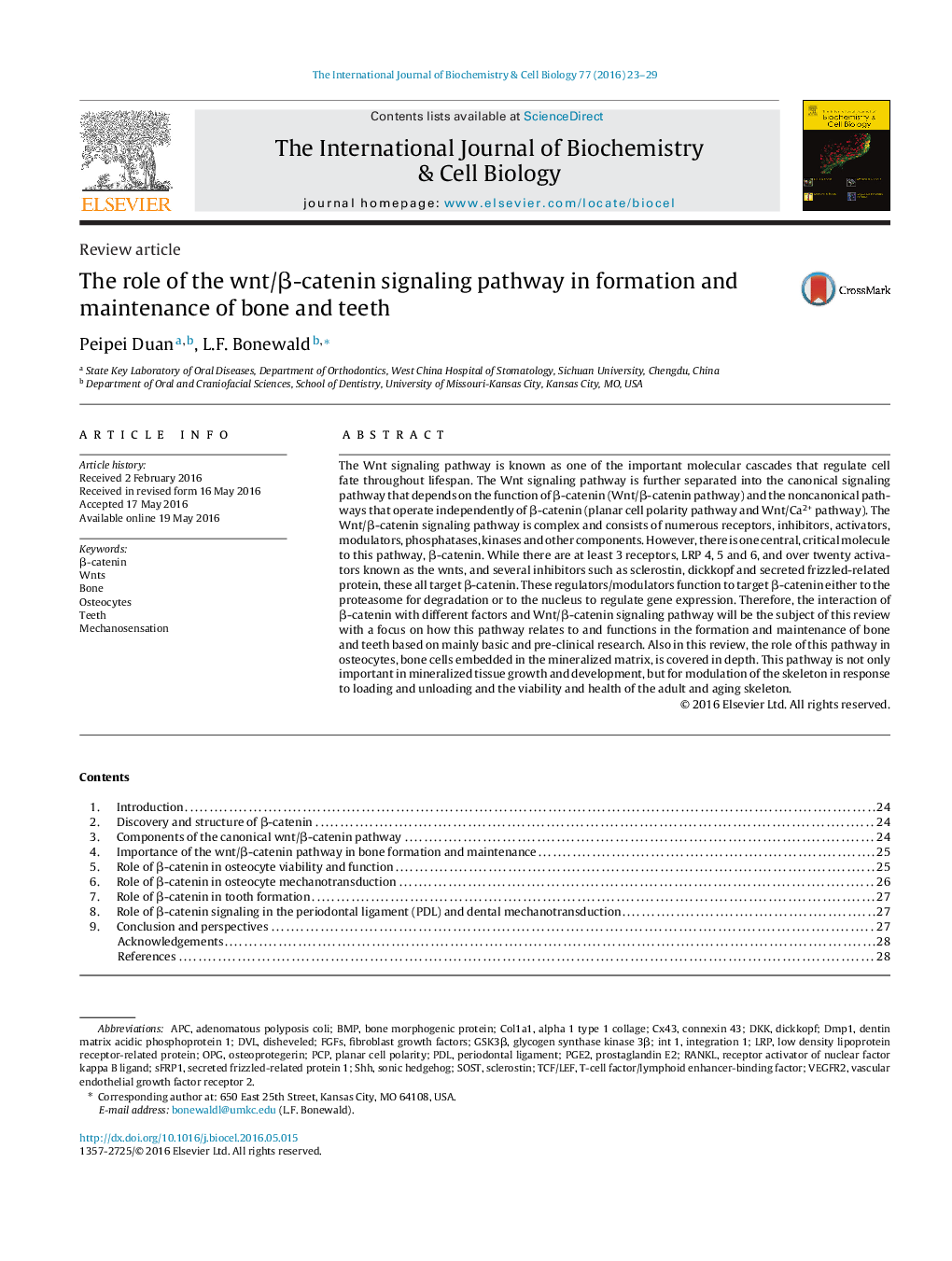| Article ID | Journal | Published Year | Pages | File Type |
|---|---|---|---|---|
| 1983328 | The International Journal of Biochemistry & Cell Biology | 2016 | 7 Pages |
The Wnt signaling pathway is known as one of the important molecular cascades that regulate cell fate throughout lifespan. The Wnt signaling pathway is further separated into the canonical signaling pathway that depends on the function of β-catenin (Wnt/β-catenin pathway) and the noncanonical pathways that operate independently of β-catenin (planar cell polarity pathway and Wnt/Ca2+ pathway). The Wnt/β-catenin signaling pathway is complex and consists of numerous receptors, inhibitors, activators, modulators, phosphatases, kinases and other components. However, there is one central, critical molecule to this pathway, β-catenin. While there are at least 3 receptors, LRP 4, 5 and 6, and over twenty activators known as the wnts, and several inhibitors such as sclerostin, dickkopf and secreted frizzled-related protein, these all target β-catenin. These regulators/modulators function to target β-catenin either to the proteasome for degradation or to the nucleus to regulate gene expression. Therefore, the interaction of β-catenin with different factors and Wnt/β-catenin signaling pathway will be the subject of this review with a focus on how this pathway relates to and functions in the formation and maintenance of bone and teeth based on mainly basic and pre-clinical research. Also in this review, the role of this pathway in osteocytes, bone cells embedded in the mineralized matrix, is covered in depth. This pathway is not only important in mineralized tissue growth and development, but for modulation of the skeleton in response to loading and unloading and the viability and health of the adult and aging skeleton.
